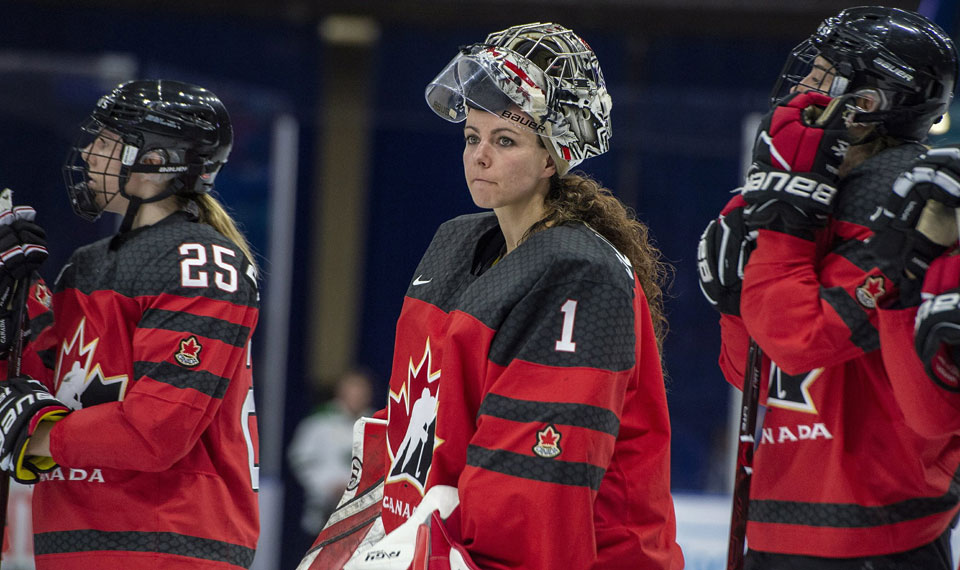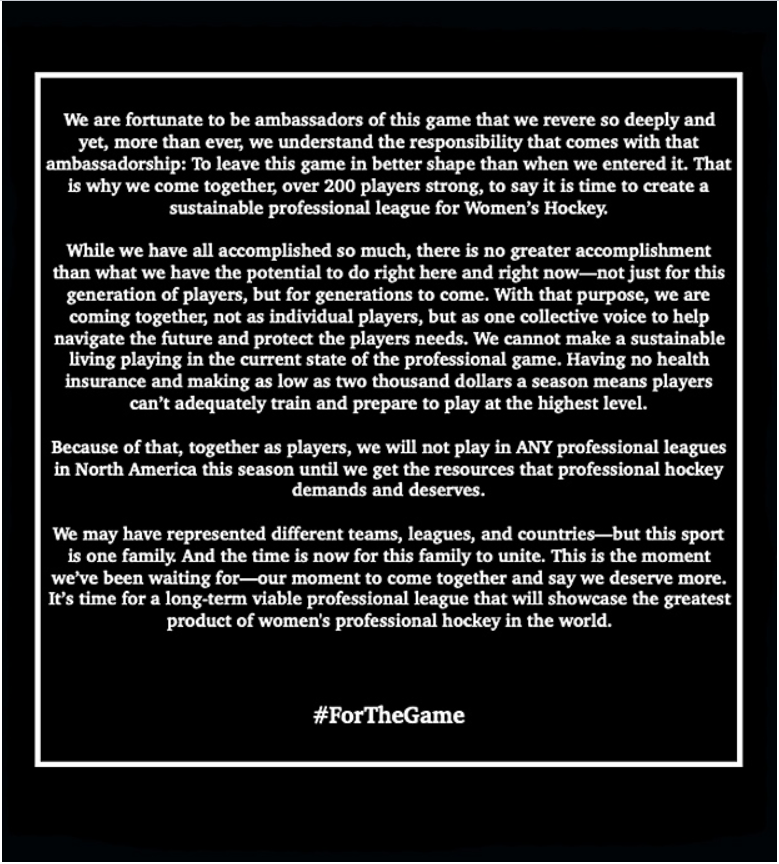
There is truly no better way to embody the spirit of May Day (International Workers Day) than by announcing a labor boycott the day after the working-class celebrated worldwide.
It is exactly what happened Thursday when over 200 female hockey players, tired of the status quo, declared they will not compete in North America next season. Instead, they will focus on establishing a single, economically viable professional hockey league.
“We will not play in ANY professional leagues in North America this season until we get the resources that professional hockey demands and deserves. “We cannot make a sustainable living playing in the current state of the professional game… Having no health insurance and making as low as two thousand dollars a season means players can’t adequately train and prepare to play at the highest level,” read the joint statement.
The players move is bold. It shows cross-border solidarity, and stresses publicly the challenges they face daily with being paid as little as $2,000 a year in salary, while having to pay for their own health insurance. Members of national teams earn a stipend for USA Hockey and Hockey Canada, plus the occasional sponsorship, but for most, holding a traditional job is the only way to make ends meet.
Shouldn’t one job be enough?
The stand by rank and file players, and some high-profile ones too, could also put the five-team National Women’s Hockey League on ice for the entire upcoming season—hitting bosses where it hurts, the pocketbook.
The organized boycott came together in less than a month and follows the unexpected fold of the Canadian Women’s Hockey League March 31, after 12-years of operation, leaving the NWHL the only professional women’s league.
“Obviously we want to be on the ice, but I think that kind of speaks volumes to how critical it is and how important it is to us,” said Shannon Szabados, Canadian national team goalie. “It’s strength in numbers. It’s coming from all of us. It’s not just a few of us. It’s not just players who play for one league or the other. It’s over 200 of us that kind of want to stop being pulled in 10 different directions and kind of get all our resources under one roof.”
We are innovators, and we’re redefining women’s hockey. @BauerHockey #WomensMovementNeverStops pic.twitter.com/oYg3PsewA3
— Hilary Knight (@HilaryKnight) May 2, 2019
The players’ decision also adds pressure on the NHL and NHL Players Association to play a larger role in women’s’ hockey. Aside from financial support, the NHL has stopped short of including the possibility of sponsoring its own women’s league.
NHL commissioner Gary Bettman has often gone on record saying he didn’t think women’s leagues were going to exist long-term but would offer limited financial support, around $50,000 per year, while they did.
“What we have said is, if there’s no opportunity for women to play professional hockey, then we would explore what would make sense or might be appropriate,” Bettman said after the CWHL ceased operations.
“What we’ve repeatedly said is if there turns out to be a void — and we don’t wish that on anybody — then we’ll look at the possibilities and we’ll study what might be appropriate,” Bettman added. “But at the end of the day, we’re not looking to put anybody out of business. And if the NWHL can make a go of it, we wish them good luck.”
That reasoning is not enough.
“The NHL’s saying, ‘Until there’s a void in women’s hockey we’re not going to step in,’ “said Liz Knox, CWHL Players Association co-chair. “Well, here’s a void. Here’s the players saying this is not enough. We’ve earned better than this. We’ve earned the respect we have, and we deserve what we’re asking for.”
She continued: “Take a look in the mirror, Hockey Canada and USA Hockey, I mean, these are your players who are winning you Olympic medals saying, ‘We’re just not getting enough right now.’ … I would certainly hope it’s a moment for them to self-reflect and say, ’OK, where are our interests and where do we see it fitting in the future?”
All eyes are on you now NWHL. Choose your next move wisely, and don’t underestimate the strength of collective action.
Below is the full statement:











